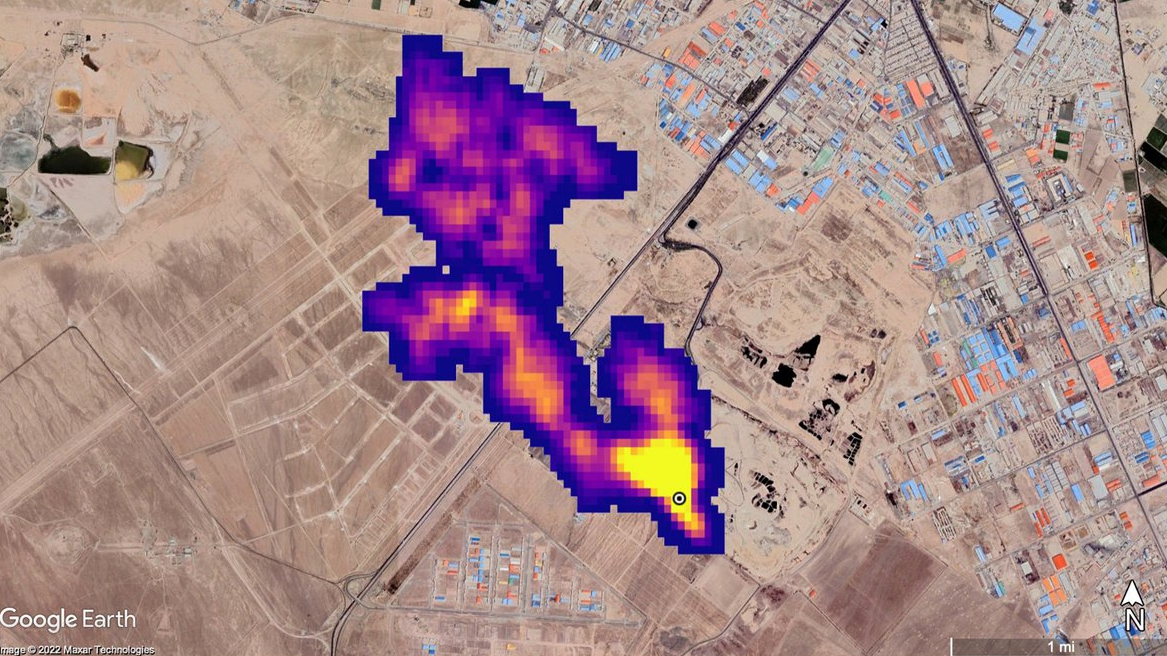NASA searches for climate solutions as global temperatures reach record highs
From unmanned aircraft to ultra-precise satellite data, NASA officials open up about innovations to protect our planet.

NASA scientists opened a discussion on Thursday (July 20) to outline key solutions they've been working on to mitigate the dire effects of global warming.
As heat waves continue to sweep across Earth, wildfires burn across North America and natural disasters like hurricanes increase in severity – all consequences of human-induced climate change – the space agency is paying attention and looking for ways it can help mitigate the effects of a warming planet. "This last June was the warmest June on record," Gavin Schmidt, director of NASA's Goddard Institute for Space Studies, said. "And we anticipate, with the understanding of what's going on, on a day by day basis, that July is likely to be the warmest absolute month on record."
To be clear, that's a record that goes back many hundreds, if not thousands, of years, he said.
While Schmidt and fellow presenters pointed out quite a few of NASA's endeavors to combat climate change, some highlights included missions to improve our understanding of how global warming is changing biological systems, looking into next-gen technologies like unmanned aircraft to monitor wildfire response mechanisms and deploying satellites to track greenhouse gas emissions across the globe.
Related: NASA highlights climate research at opening of inaugural summit
Another recurring theme of the discussion was the importance of generating pristine climate data that's available to the public, researchers and policymakers with the power to make a difference.
There was even some preliminary talk about how artificial intelligence and deep learning could aid the agency with getting climate data that's as precise and accurate as possible, but the team emphasized how such mechanisms are still very much in-the-works.
Breaking space news, the latest updates on rocket launches, skywatching events and more!
"Our science isn't done until we've communicated it," Karen St. Germain, director of NASA's Earth Science Division, said. "This has never been more important or compelling than it is today. NASA Earth Science is end-to-end capability from technology all the way through what the observations mean, today and into the future. That end to end capability allows us the opportunity to deliver actionable science and information so more people can see the Earth as we see it."
"You think of NASA as a space agency; you think of NASA as an aeronautical agency," NASA administrator Bill Nelson said, "NASA is also a climate agency."
This sentiment grew clear as a variety of experts in marine science, aeronautical engineering and environmental studies spoke during the conference about the immediacy with which climate change must be handled.
"The heat waves that we're seeing in the U.S., in Europe and in China are demolishing records left, right and center," Schmidt said. "There has been decade on decade of increasing temperatures – throughout the last four decades." In fact, Gavin suggested 2023 may prove to be the hottest year on record and 2024 will more than likely take that grim title.
NASA isn't only focused on managing the crisis in order to protect humanity, but also to aid species on land and in sea.
"The waters around Florida are over 90 degrees Fahrenheit, which is extremely complicated for marine species like coral reefs, marine plants and marine animals," Carlos Del Castillo, chief of the Ocean Ecology Laboratory at NASA's Goddard Space Flight Center, said. "And all the CO2 we're putting into the air is causing that temperature – a lot of it goes into the ocean."
To put this into perspective, he says we have increased the acidity of the ocean by about 25% since the Industrial Revolution.
"Pretty much everywhere, particularly in the oceans, we've been seeing record-breaking sea-surface temperatures – even outside of the tropics," Schmidt said. "We anticipate that is going to continue, and the reason why is because we continue to put greenhouse gasses into the atmosphere. Until we stop doing that, temperatures will keep on rising."
NASA's upcoming PACE mission, slated to launch in early 2024, as well its GLIMR mission, currently expected to begin the following year, will hopefully help scientists decipher how to tackle that marine issue.
Both are satellite-based systems, but PACE, which stands for Plankton, Aerosol, Cloud, ocean Ecosystem, will be more focused on detecting ocean color changes, clouds and aerosols while GLIMR, which stands for Geostationary Littoral Imaging and Monitoring Radiometer, will identify things like harmful algal blooms and oil spills.
The two, however, are thought to work in conjunction with one another to paint a full picture of how climate change is affecting our oceans and the organisms within.
They'll add to the over two dozen climate-related missions NASA already has in orbit, such as the Orbiting Carbon Observatories 2 and 3 which measured greenhouse gas emissions stemming from Europe's largest coal-fired power plant earlier this year.
"Why should we care?" Del Castillo said, "Well, these little marine plants are at the bottom of the food web. They produce about 50% of the oxygen that we are breathing – and, of course, the ocean helps modulate the weather."
In the realm of spaceflight, Huy Tran, aeronautics director at NASA’s Ames Research Center touched on some of the green technologies and sustainable aviation propulsion mechanisms the agency intends to develop for various forms of air travel.
"Last year, the Aeronautics Research Mission Directorate initiated a sustainable flying National Partnership," Tran said, referring to one of NASA's aviation research organizations, "This initiative allowed us to accelerate and make good progress on net zero aviation by 2050."
Some ideas brought up for sustainable flying include fully electric aircraft and a way to ensure reduced fuel burn for commercial aviation. Tran also discussed the possibility of creating unmanned drones and aircraft to take care of wildfires without risking lives.
Further, by partnering with organizations such as FEMA and NOAA, Tom Wagner, associate director for Earth Action, said the agency hopes to identify what society's needs are with regard to actionable climate change solutions.
"What we know from science is that human activity and principally greenhouse gas emissions are unequivocally causing the warming that we're seeing on our planet," Kate Calvin, NASA chief scientist and senior climate adviser, said.
"And this is impacting people and ecosystems around the world."

Monisha Ravisetti is Space.com's Astronomy Editor. She covers black holes, star explosions, gravitational waves, exoplanet discoveries and other enigmas hidden across the fabric of space and time. Previously, she was a science writer at CNET, and before that, reported for The Academic Times. Prior to becoming a writer, she was an immunology researcher at Weill Cornell Medical Center in New York. She graduated from New York University in 2018 with a B.A. in philosophy, physics and chemistry. She spends too much time playing online chess. Her favorite planet is Earth.

